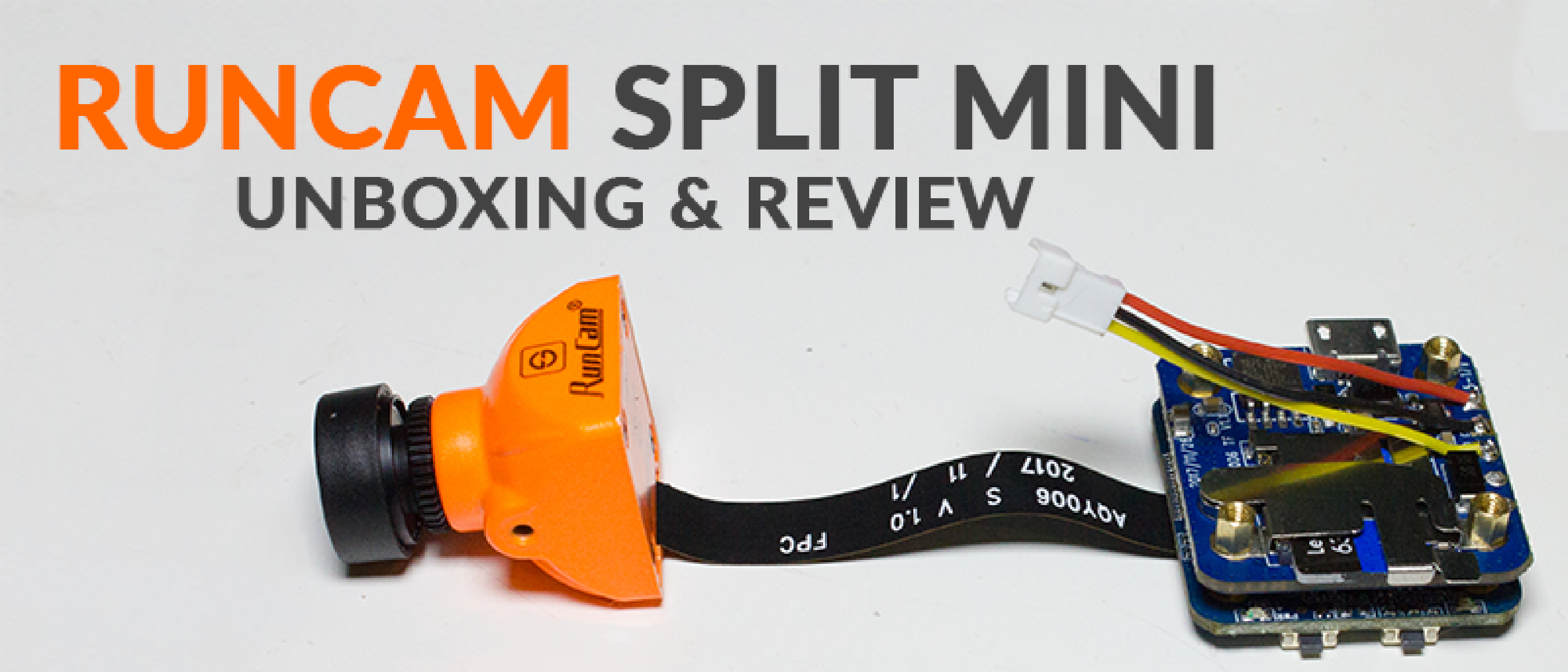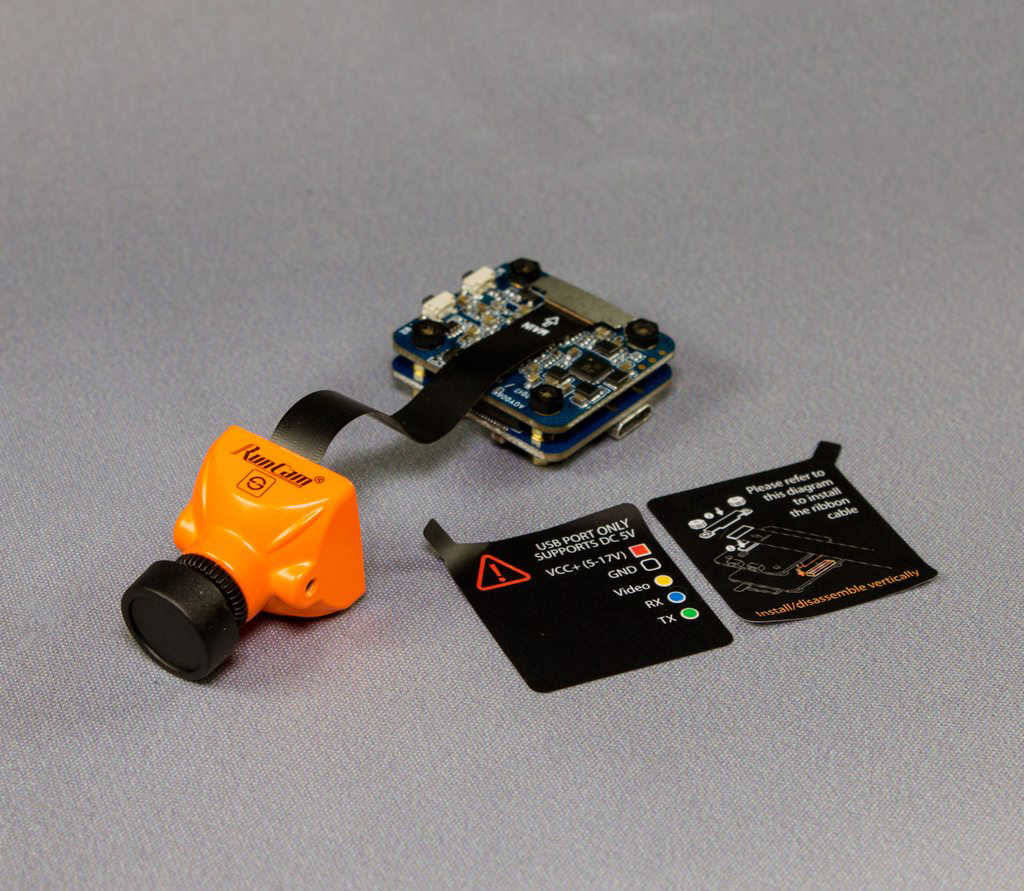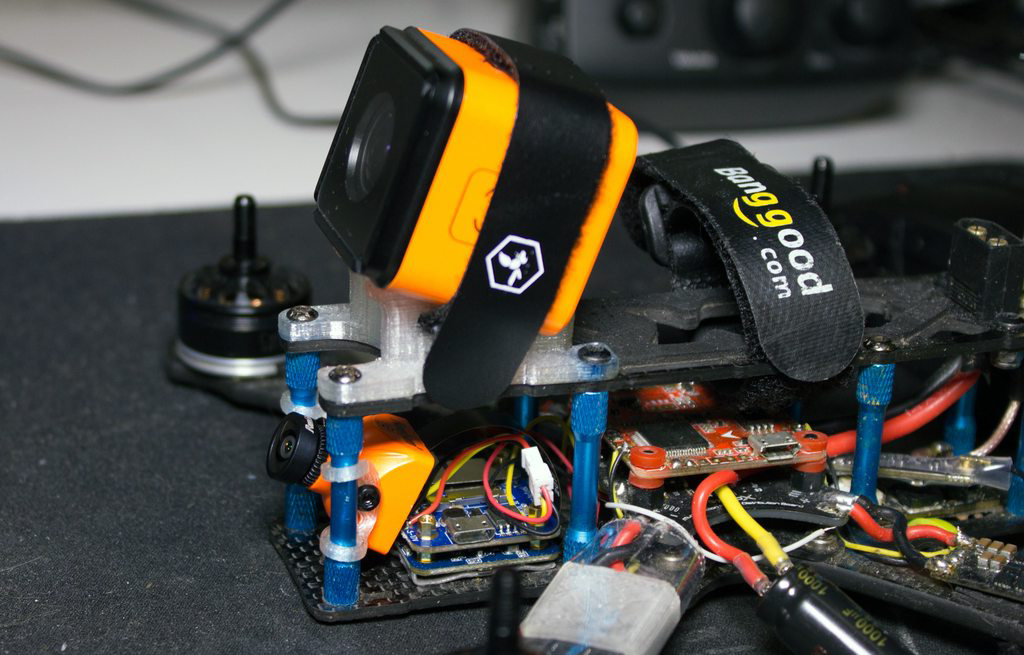Reviews
Runcam Split Mini: Unboxing & Review
Posted on January 12, 2018 • 3 min read • 638 words
So who wants 1080P 60FPS in a 20x20mm stack & Runcam Micro form factor? Yes please! Runcam were kind enough to send me out the production version of this camera just before the imminent release date so I figured I’d take a bit of time and bump it up in the queue to get some footage out for you guys and a quick unboxing. Priced at around £58.70 at current prices, it offers an all in one HD recording camera and FPV camera in one. This is the mini version of their full Split system which is currently at Version 2. I haven’t flown the V2 personally but I’ve heard great things and many improvements upon the V1 system so I was excited to see how this differed considering the size.

Product Specs
Taken straight from Runcam here is the listed features of the Split.
- FOV Angle of Field: FPV FOV 130° / Recording FOV 165°
- Video Resolution: 1080@60fps / 1080@30fps / 720@60fps
- Video Files: MOV
- Image Resolution: 2 MP
- TV Output: NTSC (720480) / PAL (720576) Switchable
- Interface: Micro USB / UART
- Max Micro SD Card Supported: 64G(need Class 6 or above, recommend Class 10/UHS-I/UHS-II)
- Hole Distance of Installation: 20*20mm
- Dimensions: PCB 2729mm / Lens Module 1919mm
- Power Input: DC 5-17V/DC 5V(USB)
- Working Current: 650mA @5V / 270mA @12V
- Weight: 15g
Drone Installation
Because of the cable provided by Runcam, installing this couldn’t be simpler. If you don’t want to run Betaflight control (as I didn’t), you simply need to solder the 3-pin pigtail onto the the 3 pads on the top of the top stack. You can see the unboxing and installation video further down below.

I plan to install the stack ‘backwards’ to take up some of the camera wiring slack which means it will sit very tidily inside the build.

All I then simple do is plug in my camera connector coming from the TBS Unify Pigtail into that connector, and as simple as that everything works!

And that’s really all there is to it. If you were building a 3" or smaller you’d naturally put the camera boards inside the stack with your flight controller, but here we can see it fits perfectly inside the front of an AstroX X5, and by using the 3d printed Hyperlite Floss FPV Camera mounts, we get a solid camera mounting solution without requiring any fancy plates or anything else.
Unboxing & Flight Footage
Here’s my unboxing video & some flight footage.
I haven’t added any DVR footage from the goggles as on inspection it’s essentially the same, it is just obviously cut on the sides as I run 4:3 goggles.
Final Thoughts
The Runcam Mini Split is a great addition to the Runcam lineup and is useful for any size build above 2" in my opinion. You can use it for a super lightweight setup on your normal 5"+ quads, or you can use it on the smaller setups without the weight penalties that you’d normally get from something like a Session. The only thing I’m not sure on with the camera is the WDR - I think it lacks a little here but with some post-processing you can easily fix this. Despite the camera being a CMOS, it was actually enjoyable to fly as well, I’m a long time believer in CCD=FPV, but this is one of the very few CMOS cameras I’ve seen that have done a good job of light changes!
LATENCY: The all important question I seemed to forget? For me personally I didn’t notice any extra latency when freestyling with it.